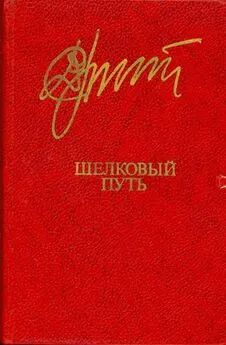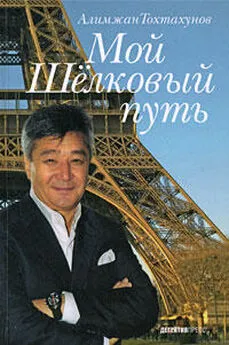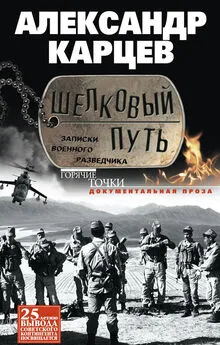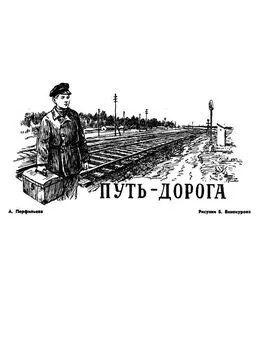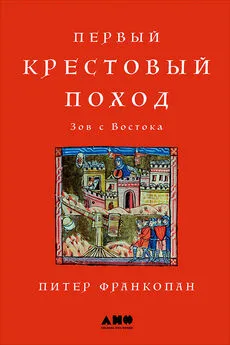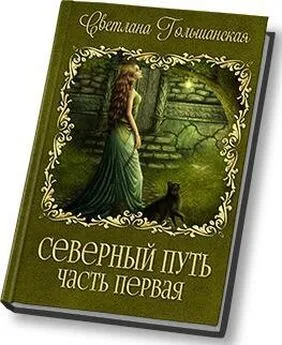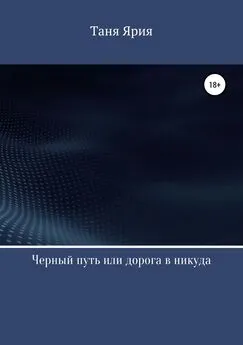Питер Франкопан - Шелковый путь. Дорога тканей, рабов, идей и религий
- Название:Шелковый путь. Дорога тканей, рабов, идей и религий
- Автор:
- Жанр:
- Издательство:Литагент 5 редакция
- Год:2017
- Город:Москва
- ISBN:978-5-699-95706-4
- Рейтинг:
- Избранное:Добавить в избранное
-
Отзывы:
-
Ваша оценка:
Питер Франкопан - Шелковый путь. Дорога тканей, рабов, идей и религий краткое содержание
Вы увидите, что история развивалась совсем не так, как мы привыкли изучать в школе. Так, столетия назад интеллектуальные центры мира, «Оксфорды» и «Кембриджи», «Гарварды» и «Йели», находились не в Европе, а в городах Средней Азии, куда и съезжалась вся просвещенная молодежь в поисках успеха.
Шелковый путь. Дорога тканей, рабов, идей и религий - читать онлайн бесплатно ознакомительный отрывок
Интервал:
Закладка:
111
Power, Red Sea , р. 58.
112
Schafer, Golden Peaches of Samarkand , р. 1.
113
То, что посольство принесло панцирь черепахи, рог носорога и слоновую кость, говорит о том, что посол был хорошо проинформирован о вкусах китайцев F. Hirth, China and the Roman Orient (Leipzig, 1885), р. 42, 94; R. McLaughlin, Rome and the Distant East: Trade Routes to the Ancient Lands of Arabia, India and China (London, 2010).
114
Fitzpatrick, ‘Provincializing Rome’, 36; Horace, Odes , 1.12, in Horace: Odes and Epodes , ed. and tr. N. Rudd (Cambridge, MA, 2004), р. 48.
115
B. Isaac, The Limits of Empire: The Roman Army in the East (Oxford, 1990), р. 43; S. Mattern, Rome and the Enemy: Imperial Strategy in the Principate (Berkeley, 1999), р. 37.
116
Cassius Dio, 68.29, 8, рр. 414–416; H. Mattingly (ed.), A Catalogue of the Coins of the Roman Empire in the British Museum , 6 vols (London, 1940–1962), 3, р. 606. О троянской кампании см. J. Bennett, Trajan: Optimus Princeps (London, 1997), рр. 183–204.
117
Jordanes, Romana , in Iordanis Romana et Getica , рр. 34–35.
118
Lactantius, De Mortibus Persecutorum , ed. and tr. J. Creed (Oxford, 1984), 5, р. 11.
119
A. Invernizzi, ‘Arsacid Palaces’, in I. Nielsen (ed.), The Royal Palace Institution in the First Millennium BC (Athens, 2001), рр. 295–312; ‘The Culture of Nisa, between Steppe and Empire’, in J. Cribb and G. Herrmann (eds), After Alexander: Central Asia before Islam: Themes in the History and Archaeology of Western Central Asia (Oxford, 2007), рр. 163–177. В. Пилипко, Росписи старой Низы (Ташкент, 1992); Р. Bernard and F. Grenet (eds), Histoire des cultes de l’Asie Centrale préislamique (Paris, 1991).
120
О Харакене – L. Gregoratti, ‘A Parthian Port on the Persian Gulf: Characene and its Trade’, Anabasis 2 (2011), рр. 209–229. О керамике см., например, H. Schenk, ‘Parthian Glazed Pottery from Sri Lanka and the Indian Ocean Trade’, Zeitschrift für Archäologie Außereuropäischer Kulturen 2 (2007), рр. 57–90.
121
F. Rahimi-Laridjani, Die Entwicklung der Bewässerungslandwirtschaft im Iran bis in Sasanidisch-frühislamische Zeit (Weisbaden, 1988); R. Gyselen, La Géographie administrative de l’empire sasanide: les témoignages sigilo-graphiques (Paris, 1989).
122
A. Taffazoli, ‘List of Trades and Crafts in the Sassanian Period’, Archaeologische Mitteilungen aus Iran 7 (1974), рр. 192–196.
123
T. Daryaee, Šahrestānīhā-ī Ērānšahr: A Middle Persian Text on Late Antique Geography, Epic, and History (Costa Mesa, CA, 2002).
124
M. Morony, ‘Land Use and Settlement Patterns in Late Sasanian and Early Islamic Iraq’, in A. Cameron, G. King and J. Haldon (eds), The Byzantine and Early Islamic Near East , 3 vols (Princeton, 1992–1996), 2, рр. 221–229.
125
R. Frye, ‘Sasanian Seal Inscriptions’, in R. Stiehl and H. Stier (eds), Beiträge zur alten Geschichte und deren Nachleben , 2 vols (Berlin, 1969–1970), 1, рр. 77–84; Choksy, ‘Loan and Sales Contracts in Ancient and Early Medieval Iran’, Indo-Iranian Journal 31 (1988), р. 120.
126
T. Daryaee, ‘The Persian Gulf Trade in Late Antiquity’, Journal of World History 14.1 (2003), рр. 1–16.
127
Lactantius, De Mortibus Persecutorum , 7, р. 11.
128
Там же, 23, р. 36.
129
Бодрумский музей подводной археологии. Насколько я знаю, надпись, обнаруженная в 2011 году, еще не опубликована.
130
Pseudo-Aurelius Victor, Epitome de Caesaribus, ed. M. Festy , Pseudo-Aurelius Victor. Abrégé de Césars (Paris, 1999), 39, р. 41.
131
Suetonius, Divus Julius , 79, in Lives of the Caesars , 1, р. 132.
132
Libanius, Antioch as a Centre of Hellenic Culture as Observed by Libanius , tr. Norman (Liverpool, 2001), рр. 145–167.
133
О развенчивании «мифа о переносе столицы империи» см. L. Grig and G. Kelly (eds), Two Romes: Rome and Constantinople in Late Antiquity (Cambridge, 2012).
134
H. Falk, Asókan Sites and Artefacts: A Source-book with Bibliography (Mainz, 2006), р. 13; E. Seldeslachts, ‘Greece, the Final Frontier? – The Westward Spread of Buddhism’, in A. Heirman and S. Bumbacher (eds), The Spread of Buddhism (Leiden, 2007), esр. рр. 158–160.
135
Sick, ‘When Socrates Met the Buddha’, р. 271; о современной палийской литературе – T. Hinüber, A Handbook of Pali Literature (Berlin, 1996).
136
G. Fussman, ‘The Mat Devakula : A New Approach to its Understanding’, in D. Srivasan (ed.), Mathurā: The Cultural Heritage (New Delhi, 1989), рр. 193–199.
137
Например, Р. Rao Bandela, Coin Splendour: A Journey into the Past (New Delhi, 2003), рр. 32–35.
138
D. MacDowall, ‘Soter Megas, the King of Kings, the Kushana’, Journal of the Numismatic Society of India (1968), рр. 28–48.
139
Обратите внимание, например, на описание в «Книге Псалмов» – «Бог Бога … Господь господствующих» (Пс. 136: 2–3, или «Бог богов и Господь господствующих» (Второзаконие 10:17). «Книга откровений» рассказывает, как зверь будет побежден, потому что Агнец – «Господь господствующих и Царь царей» (Откр. 17:14).
140
The Lotus of the Wonderful Law or The Lotus Gospel: Saddharma Pundarīka Sūtra Miao-Fa Lin Hua Chung , tr. W. Soothill (London, 1987), р. 77.
141
X. Liu, Ancient India and Ancient China: Trade and Religious Exchanges AD 1–600 (Oxford, 1988), р. 102.
142
Sukhāvatī-vyūha: Description of Sukhāvatī, the Land of Bliss , tr. F. Müller (Oxford, 1883), рр. 33–34; Lotus of the Wonderful Law , рр. 107, 114.
143
D. Schlumberger, M. Le Berre and G. Fussman (eds), Surkh Kotal en Bactriane , vol. 1: Les Temples: architecture, sculpture, inscriptions (Paris, 1983); V. Gaibov, ‘Ancient Tajikistan Studies in History, Archaeology and Culture (1980–1991)’, Ancient Civilizations from Scythia to Siberia 1.3 (1995), рр. 289–304.
144
R. Salomon, Ancient Buddhist Scrolls from Gandhara (Seattle, 1999).
145
J. Harle, The Art and Architecture of the Indian Subcontinent (New Haven, 1994), рр. 43–57.
146
См., главным образом, E. de la Vaissière, Sogdian Traders: A History (Leiden, 2005).
147
K. Jettmar, ‘Sogdians in the Indus Valley’, in Р. Bertrand and F. Grenet (eds), Histoire des cultes de l’Asie centrale préislamique (Paris, 1991), рр. 251–253.
148
C. Huart, Le Livre de Gerchāsp, poème persan d’Asadī junior de Toūs , 2 vols (Paris, 1926–1929), 2, р. 111.
149
R. Giès, G. Feugère and A. Coutin (eds), Painted Buddhas of Xinjiang: Hidden Treasures from the Silk Road (London, 2002); T. Higuchi and G. Barnes, ‘Bamiyan: Buddhist Cave Temples in Afghanistan’, World Archaeology 27.2 (1995), р. 282ff.
150
M. Rhie, Early Buddhist Art of China and Central Asia , vol. 1 (Leiden, 1999); Wei, Ancient Chinese Architecture: Buddhist Buildings (Vienna, 2000).
151
G. Koshelenko, ‘The Beginnings of Buddhism in Margiana’, Acta Antiqua Academiae Scientiarum Hungaricae 14 (1966), рр. 175–183; R. Foltz, Religions of the Silk Road: Premodern Patterns of Globalization (2nd edn, Basingstoke, 2010), рр. 47–48; R. Foltz, ‘Buddhism in the Iranian World’, Muslim World 100.2–3 (2010), рр. 204–214.
152
N. Sims-Williams, ‘Indian Elements in Parthian and Sogdian’, in R. Röhrborn and W. Veenker (eds), Sprachen des Buddhismus in Zentralasien (Wiesbaden, 1983), рр. 132–141; W. Sundermann, ‘Die Bedeutung des Parthischen für die Verbreitung buddhistischer Wörter indischer Herkunft’, Altorientalische Forschungen 9 (1982), рр. 99–113.
153
W. Ball, ‘How Far Did Buddhism Spread West?’, Al-Rāfidān 10 (1989), рр. 1–11.
154
T. Daryaee, Sasanian Persia: The Rise and Fall of an Empire (London, 2009), рр. 2–5.
155
Многие ученые писали о переменах. См. Canepa, The Two Eyes of the Earth: Art and Ritual of Kingship between Rome and Sasanian Iran (Berkeley, 2009).
156
M. Canepa, ‘Technologies of Memory in Early Sasanian Iran: Achaemenid Sites and Sasanian Identity’, American Journal of Archaeology 114.4 (2010), рр. 563–596; Weber, ‘Wahram II: König der Könige von Eran und Aneran’, Iranica Antiqua 44 (2009), рр. 559–643.
157
О сасанидской чеканке в целом – R. Göbl, Sasanian Numismatics (Brunswick, 1971).
158
M. Boyce, Zoroastrians: Their Religious Beliefs and Practices (London, 1979).
159
R. Foltz, ‘Zoroastrian Attitudes toward Animals’, Society and Animals 18 (2010), рр. 367–378.
160
The Book of the Counsel of Zartusht , рр. 2–8, in R. Zaehner, The Teachings of the Magi: A Compendium of Zoroastrian Beliefs (New York, 1956), рр. 21–22. См. также M. Boyce, Textual Sources for the Study of Zoroastrianism (Manchester, 1984).
161
См., например, M. Boyce, Textual Sources for the Study of Zoroastrianism (Manchester, 1984), рр. 104–106.
Читать дальшеИнтервал:
Закладка:


